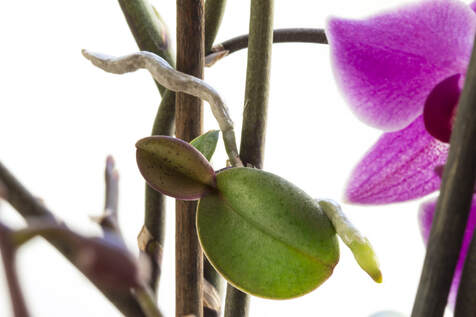|
Better-GroOrchidBlog
 Orchids sometimes sprout baby plants, or keikis, from their flower stems. Literally translated, “keiki” is Hawaiian for “the little one” -- and that’s just what keikis are. They’re little orchid plants. Why are Keikis Produced? Mature orchids may produce keikis for a variety of reasons. For instance, some genera, such as phalaenopsis and dendrobium orchids, are prone to create keikis. Many times, however, keikis are created when an orchid is stressed. If an orchid is dying, asexually producing a keiki may be its best chance at passing on its genes. Because keikis are produced asexually, without pollination, each keiki is genetically identical to its mother plant. Once mature, they’ll have the same flowers as the mother plant. How Do You Identify Keikis? Keikis look like little plants growing on the stem of a parent plant. On phalaenopsis orchids, they usually occur on the nodes along the stem. On dendrobiums, they’re typically at the end of the cane, which is where the hormones necessary to produce a keiki accumulate. What Do You Do with Keikis? If you recognize a keiki growing on one of your orchids, the first thing you should do is check the health of the mother plant. Because keikis are often induced by stress, a new keiki may be a sign that your orchid isn’t doing well. You ought to check all of the plants conditions, but there are two specific things to pay attention to:
To remove a keiki, simply cut it off with a sharp, sterile blade. To prevent more keikis from forming, you may want to cut back the mother orchid’s spikes after they’re done blooming. Sprinkle cinnamon, which is a natural fungicide, on any open wounds after cutting. If you’d like to keep the keiki and nurture it into a mature orchid, follow these steps:
Comments are closed.
|
Resources
|
Company |
|
